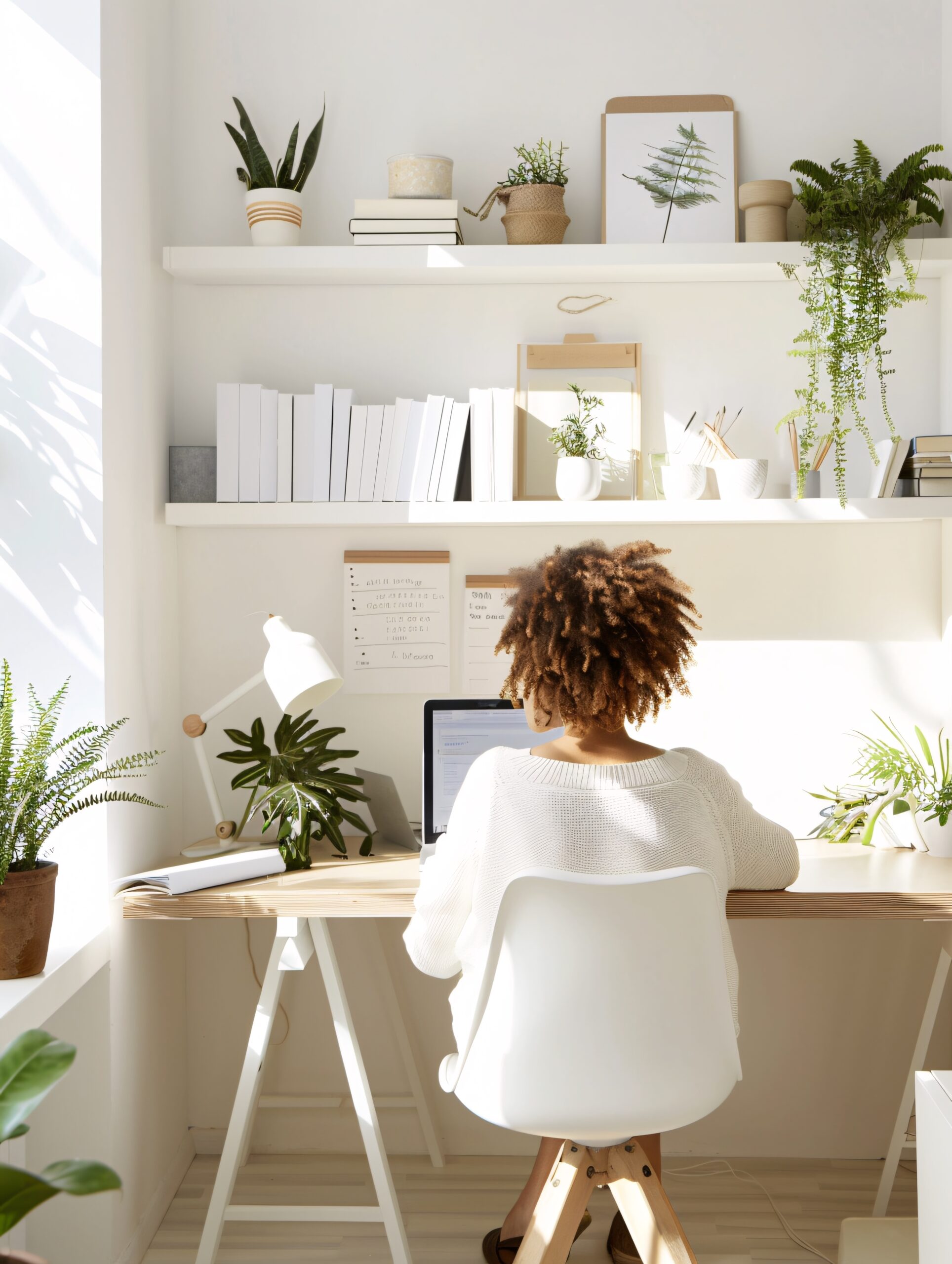In a post covid world, working from home (WFH) has become the new normal for many. While it offers flexibility and convenience, it can also present unique challenges.
At Vavista, we believe that a healthy work environment at home is crucial for productivity and well-being. In fact, a recent study found that organising your home working environment properly can boost productivity by up to 31% [1].

Here are 10 Tips for a Healthy Work From Home Environment
-
Designate a Workspace
Having a dedicated space in your house where you can do your job helps to create a clear boundary between work and personal life. Choose a quiet, well-lit area where you can focus without distractions. This could be a spare room, a corner of your living room, or even a well-organised desk in your bedroom. Having a separate space where you work will allow you to mentally ‘switch off’ when you leave that place at the end of the work day.
-
Invest in the Correct Furniture
Comfort is key to maintaining productivity and preventing physical strain. Consider investing in a good quality chair that supports your back. Find a desk that is at the right height to avoid wrist or neck strain. Consider using a standing desk or an adjustable chair to vary your posture throughout the day.
-
Maintain a Clean and Organised Space
A recent study shows a clutter-free workspace can increase productivity by a whopping 88% [2] Keep your desk tidy, organise your paper and digital files, and make sure your work area is free from distractions. Decluttering your desk has some simple practical benefits too – such as making it quicker and easier for you to find things you need. A well-organised workspace also minimises the risk of accidents, such as tripping or falling due to cluttered walkways.

-
Ensure Proper Lighting
Good lighting is essential for reducing eye strain and maintaining energy levels. Natural light is the best option, so position your desk near a window if possible. If you don’t have much natural light in your home, you can use general room lighting and then a lamp near to you that is more focused for specific tasks. If you suffer from Seasonal Affective Disorder (SAD) and the darker months affect your mood, try a special light therapy lamp to brighten your workspace.
-
Incorporate Plants and Personal Touches
Adding plants to your workspace can improve air quality and create a calming atmosphere. It’s also been proven to increase your productivity by up to 15%! [3]
Personalise your area with items that inspire you, this could be family or pet photos, fun artwork, or motivational quotes. This can boost your mood and make your workspace into a place you enjoy being.
-
Establish a Routine and Build in Breaks
Having a consistent routine helps to create a sense of normalcy and structure. Set regular working hours, take scheduled breaks, and establish a start and end time for your workday. This can help you stay focused and prevent burnout.
Here are some apps and tools that can help you establish and stick to a routine:
- Routinero: This app allows you to create repeating tasks and build a daily routine. You can set individual tasks or compile multiple tasks to form a routine and monitor your progress with daily streaks. Available for Android and iOS.
- Microsoft To Do: Syncs with your Microsoft account, allowing you to access your to-do lists on any device. The “My Day” feature helps you build a daily routine with smart suggestions and customisable repeat options. Available for Android and iOS.
- Habitify: Perfect for setting up daily habits and tracking your progress. It includes a mood tracker and options for breaking bad habits. You can split your day into sections like Morning, Afternoon, and Evening to better organise your routine. Available for Android and iOS.
Remember it’s also important to take regular breaks from a computer screen to avoid eye strain. General advice suggests 5 – 10 minutes every hour. And taking short breaks more often is better than taking one long break [4].
-
Stay Active
Incorporate physical activity into your daily routine to stay healthy and energised. Take short breaks to stretch, go for a walk during your lunch break, or do some light exercises, such as yoga. Back pain and stress are the two biggest causes of people having time off work. By increasing your physical activity in the day you can reduce your stress and improve your overall well-being [5].

-
Prioritise Mental Health
Working from home can sometimes feel isolating. Stay connected with colleagues through regular virtual meetings and check-ins. Practice mindfulness or meditation to manage stress and maintain a positive mindset. Remember to take time for yourself and engage in activities that you enjoy.
-
Set Boundaries
It’s important to set boundaries to maintain a healthy work-life balance. Let your housemates or family know your working hours so they don’t interrupt you during this time. Avoid working in your bedroom, if possible, as this can blur the lines between work and rest.
-
Stay Hydrated and Eat Healthily
Keep a water bottle at your desk to remind yourself to stay hydrated. Being well-hydrated can enhance cognitive performance by up to 30%! [6].
Plan your meals and snacks so you’re eating nutritious food throughout the day. Avoid excessive caffeine and opt for healthy snacks like fruits and nuts. Eating a nutritious diet helps maintain steady energy levels throughout the day, preventing the afternoon slump. Don’t skip breakfast or lunch, as this can lead to you grabbing something ‘quick and easy’, aka unhealthy and overeating. [7].

Creating a healthy work environment at home may seem like a chore, but it’s essential for your productivity and well-being. By following these tips, you can create a workspace that supports your professional and personal growth.
You might be interested in our blog Exercising at Home.
Get a car insurance quote today!



